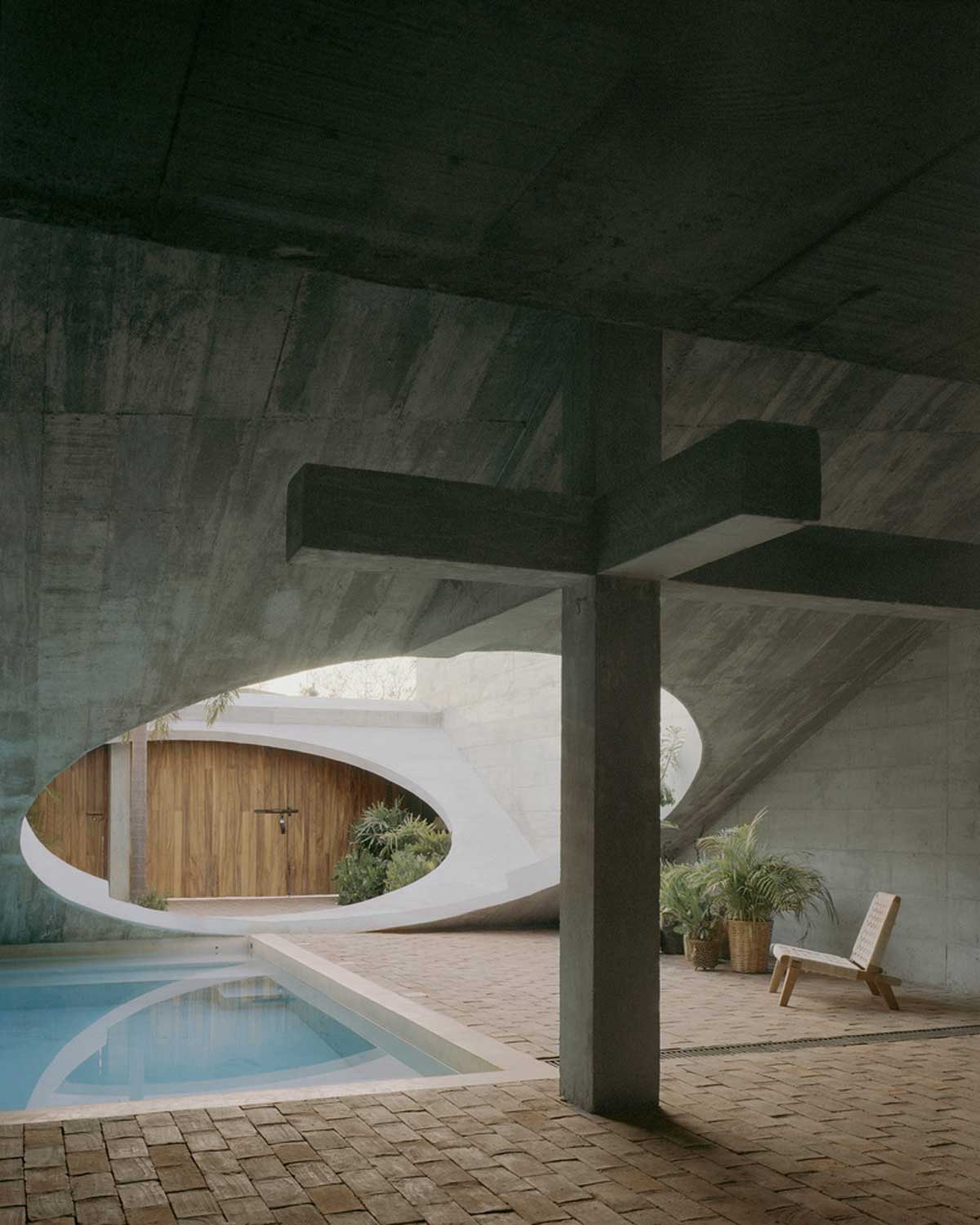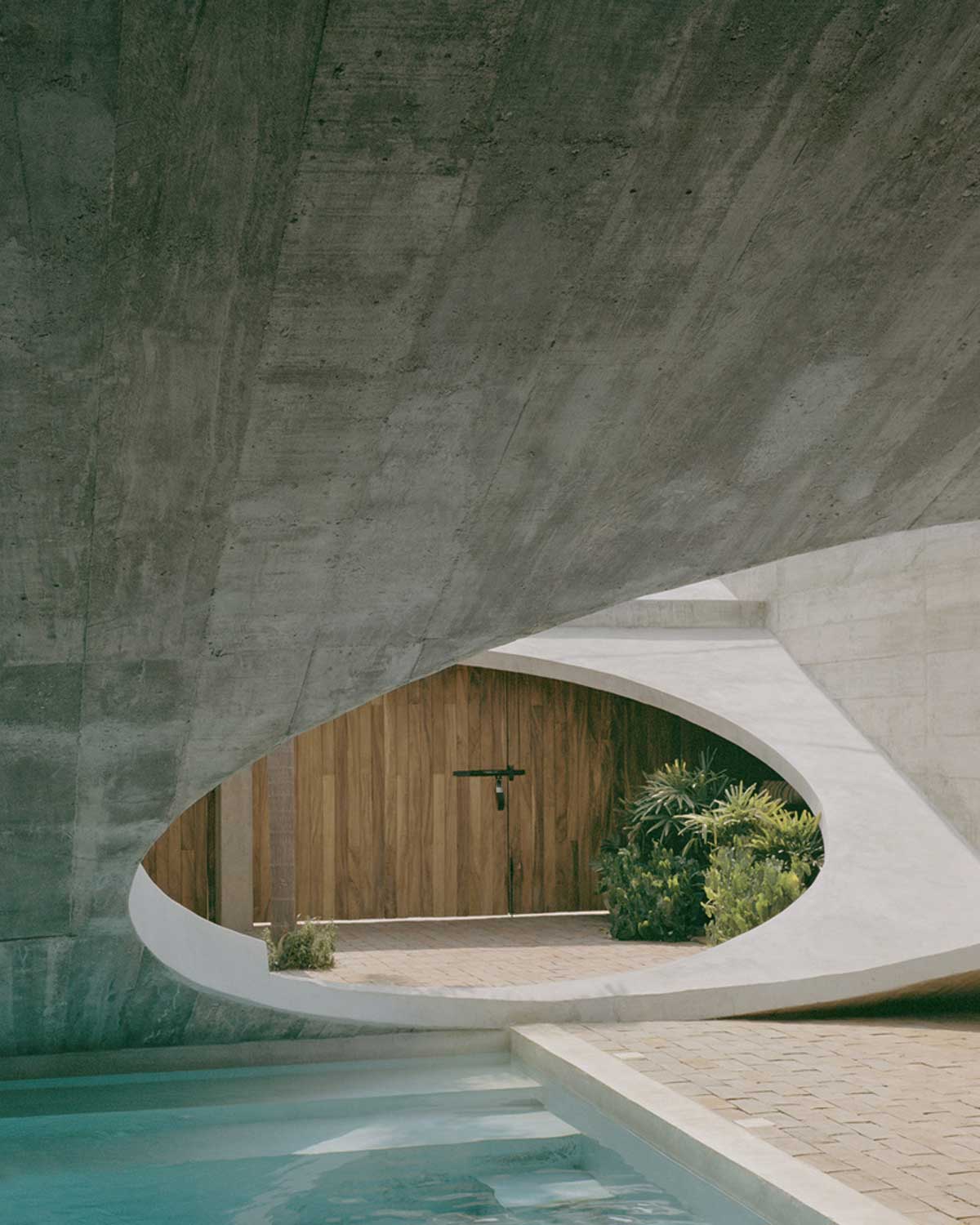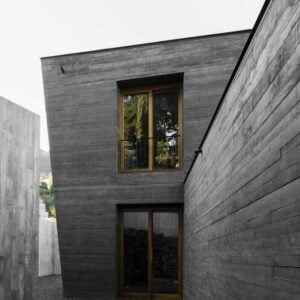The modern home is a sanctuary, a respite from the chaos of the world. It is a space that should not only be functional but also aesthetically pleasing and environmentally friendly. One way to achieve this is by creating open living spaces with concrete, wood, and natural light. These materials not only provide structural integrity but also add a sense of warmth and connection to the natural world. This article will explore the innovative use of these materials in creating open, airy, and light-filled living spaces.




Concrete as a Building Material
Concrete is a versatile and durable building material that has been used for centuries. It is made from a mixture of cement, water, and aggregates like sand and gravel. When mixed together and allowed to cure, it forms a solid mass that is incredibly strong and resistant to wear and tear. In modern home design, concrete is often used for its minimalist aesthetic and ability to create clean, sleek lines. Additionally, it is an excellent thermal mass, absorbing heat during the day and releasing it at night, helping to regulate the temperature inside the home.
Concrete is not only strong and durable but also versatile. It can be molded into any shape, making it suitable for a wide range of applications. From walls and floors to countertops and furniture, concrete can be used throughout the home to create a cohesive and modern aesthetic.
Despite its industrial appearance, concrete can be warm and inviting when paired with the right materials. Wood, for example, complements the cool, hard surface of concrete, creating a balanced and harmonious look. Additionally, the texture and color of concrete can be customized to suit the individual style and taste of the homeowner.
One of the key benefits of using concrete in home design is its thermal properties. It absorbs heat during the day and releases it at night, helping to regulate the temperature inside the home. This can be particularly beneficial in hot climates, where it can help to keep the home cool and comfortable.
While concrete is a relatively inexpensive building material, it does require a certain level of skill and expertise to work with. It needs to be mixed, poured, and cured correctly to ensure its strength and durability. Additionally, it can be heavy and difficult to handle, requiring specialized equipment and techniques.



Wood as a Building Material
Wood is a natural and renewable resource that has been used as a building material for thousands of years. It is strong, lightweight, and easy to work with, making it a popular choice for construction. In modern home design, wood is often used for its warmth and natural beauty. It can be used in a variety of ways, from structural elements like beams and columns to decorative features like flooring and cabinetry. Additionally, wood is an excellent insulator, helping to keep the home warm in the winter and cool in the summer.
Wood is a versatile material that can be used in a variety of ways in the home. It can be used as a structural element, providing support and stability to the building. It can also be used as a decorative element, adding warmth and character to the space.
One of the key benefits of using wood in home design is its insulating properties. It helps to keep the home warm in the winter and cool in the summer, reducing the need for artificial heating and cooling. Additionally, wood is a natural sound insulator, helping to create a quiet and peaceful living environment.
Wood is a renewable resource, making it an environmentally friendly choice for home construction. It is also biodegradable, meaning it will break down naturally over time, reducing its environmental impact. Additionally, wood can be recycled and repurposed, extending its lifespan and reducing waste.
While wood is a relatively easy material to work with, it does require regular maintenance to keep it looking its best. It needs to be sealed and treated to protect it from moisture, insects, and other environmental factors. Additionally, it can be susceptible to warping and cracking if not properly cared for.
Despite its many benefits, wood is not suitable for all applications. It can be susceptible to damage from moisture, insects, and fire. Additionally, it can be expensive, particularly for high-quality hardwoods. It is important to weigh the pros and cons of using wood in your home design and consider alternative materials if necessary.


Natural Light in Home Design
Natural light is a crucial element in any home design. It not only helps to create a sense of space and openness but also has numerous health benefits. Exposure to natural light during the day helps to regulate our circadian rhythms, improve our mood, and increase our productivity. In modern home design, large windows, skylights, and open floor plans are often used to maximize the amount of natural light that enters the home. Additionally, reflective surfaces like mirrors and light-colored walls can help to bounce light around the room, making it feel brighter and more spacious.
Natural light is essential for our physical and mental well-being. It helps to regulate our circadian rhythms, which in turn affects our sleep quality, mood, and overall health. Additionally, exposure to natural light during the day can help to reduce the risk of seasonal affective disorder (SAD), a type of depression that occurs at certain times of the year.
In addition to its health benefits, natural light can also help to reduce energy consumption in the home. By maximizing the amount of natural light that enters the home, it is possible to reduce the need for artificial lighting during the day. Additionally, natural light can help to heat the home in the winter, reducing the need for artificial heating.
While large windows and open floor plans can help to maximize the amount of natural light that enters the home, it is also important to consider privacy and security. It may be necessary to use window treatments like blinds or curtains to provide privacy and prevent unwanted views into the home. Additionally, it is important to consider the orientation of the home and the placement of windows to maximize natural light while minimizing glare and heat gain.
Reflective surfaces like mirrors and light-colored walls can help to bounce light around the room, making it feel brighter and more spacious. Additionally, glossy finishes on furniture and fixtures can also help to reflect light and create a sense of openness.
While natural light is essential for creating a healthy and comfortable living environment, it is also important to consider artificial lighting. Well-designed artificial lighting can complement natural light and create a warm and inviting atmosphere in the home. It is important to consider the color temperature, intensity, and placement of artificial lighting to create a balanced and harmonious lighting scheme.


The Interplay of Materials and Light
The interplay of concrete, wood, and natural light in home design can create a harmonious and balanced living space. Concrete provides a solid and stable foundation, while wood adds warmth and a connection to nature. Natural light floods the space, creating a sense of openness and airiness. Together, these materials create a living space that is not only functional but also beautiful and inspiring. By carefully considering the placement of windows and the use of reflective surfaces, it is possible to create a space that is filled with light and energy.
The combination of concrete, wood, and natural light can create a harmonious and balanced living space. Concrete provides a solid and stable foundation, while wood adds warmth and a connection to nature. Natural light floods the space, creating a sense of openness and airiness.
By carefully considering the placement of windows and the use of reflective surfaces, it is possible to create a space that is filled with light and energy. Additionally, the use of light-colored materials and finishes can help to create a sense of space and openness.
It is important to consider the orientation of the home and the placement of windows to maximize natural light while minimizing glare and heat gain. Additionally, it may be necessary to use window treatments like blinds or curtains to provide privacy and prevent unwanted views into the home.
The use of natural materials like wood and concrete can help to create a connection to the natural world and create a sense of warmth and comfort in the home. Additionally, these materials are durable and long-lasting, making them a sustainable choice for home construction.
While the interplay of concrete, wood, and natural light can create a beautiful and harmonious living space, it is also important to consider other factors like insulation, ventilation, and energy efficiency. A well-designed home should not only be beautiful but also functional and environmentally friendly.


Conclusion
Creating open living spaces with concrete, wood, and natural light is an innovative approach to modern home design. These materials not only provide structural integrity but also add a sense of warmth and connection to the natural world. By carefully considering the interplay of these materials and the use of natural light, it is possible to create a living space that is functional, beautiful, and inspiring.












